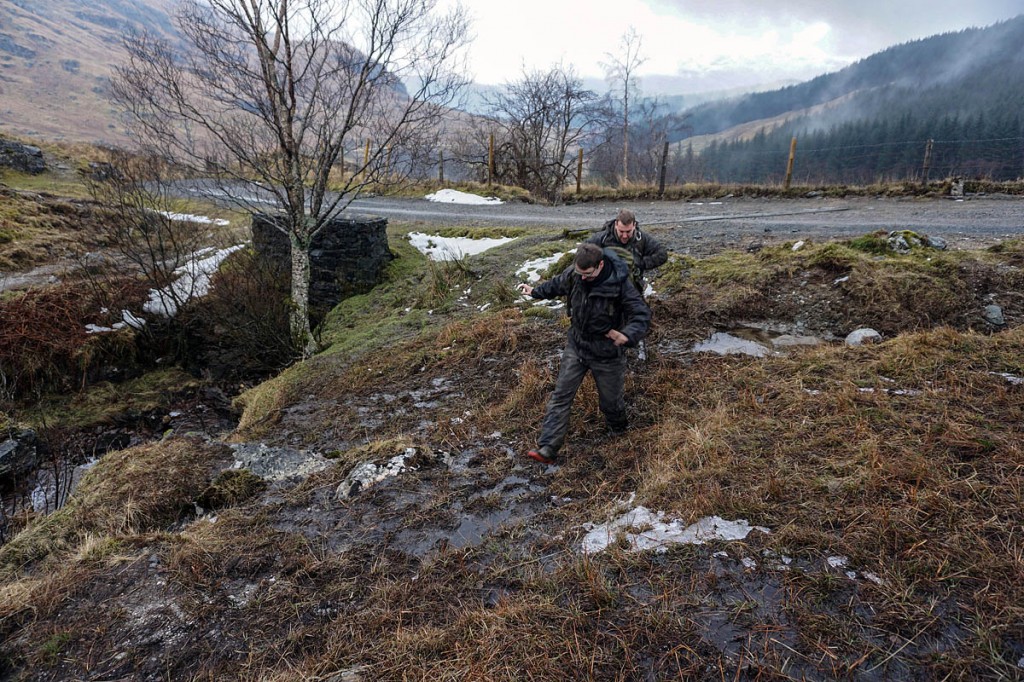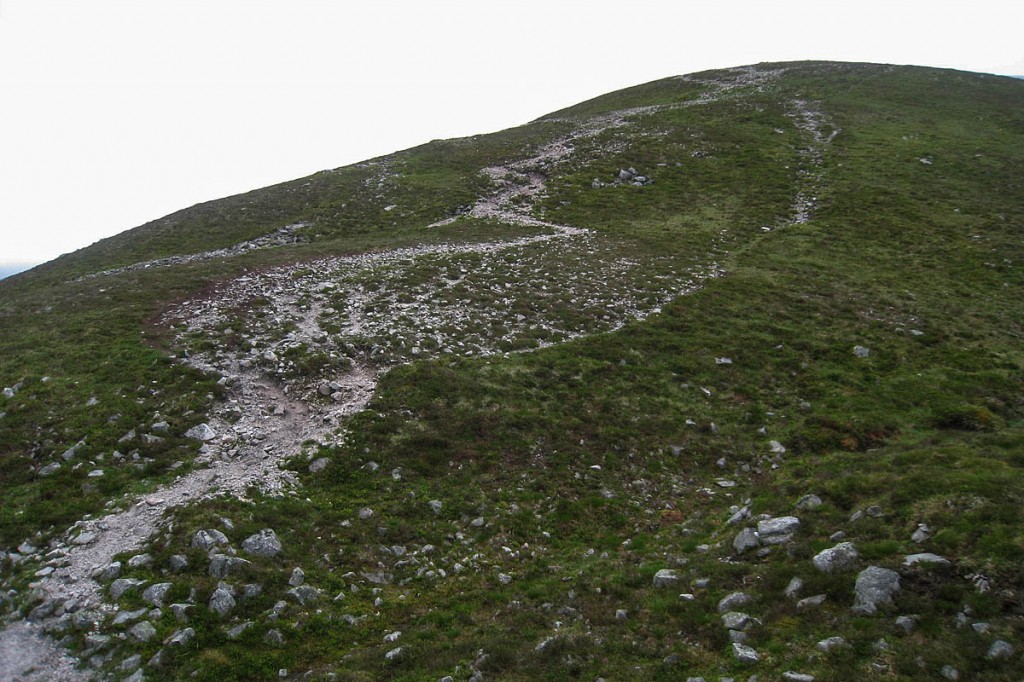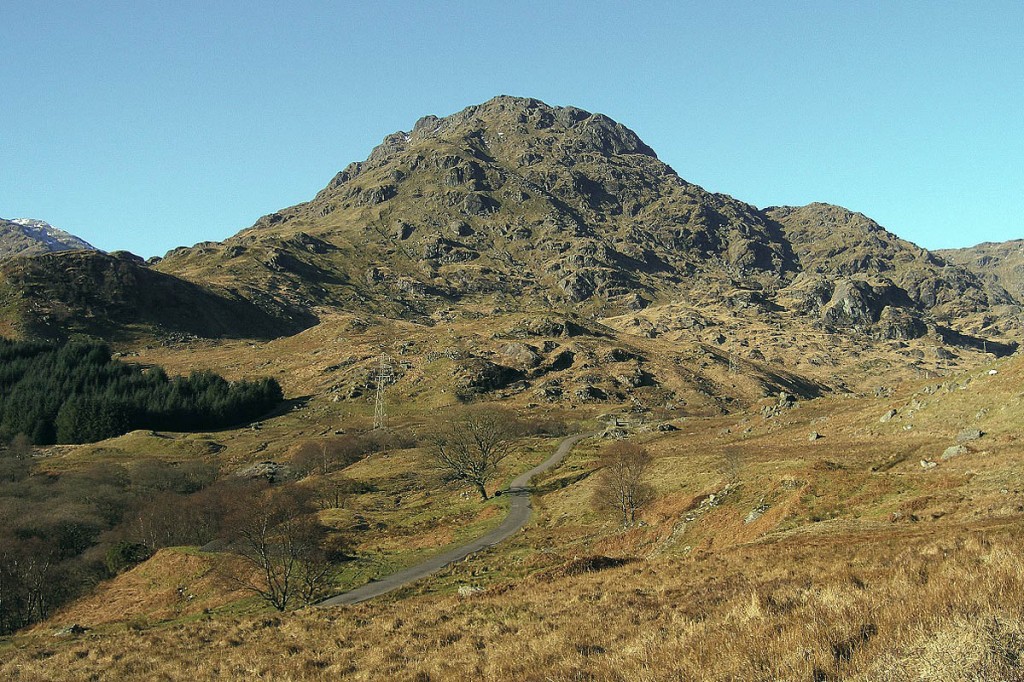Hillgoers are being asked to spare the price of a bobble hat – to improve conditions underfoot on two of Scotland’s mountains.
Mountaineering Scotland is seeking to raise £100,000 for its part of the Britain-wide Mend Our Mountains campaign.
The organisation is joining with the Outdoor Access Trust for Scotland in a bid to restore eroded footpaths on Ben Vane in the Arrochar Alps and Beinn a’ Ghlò in the southern Cairngorms.
Mountaineering Scotland said: “With hundreds of thousands of people enjoying walking and climbing in Scotland’s mountains every year, campaigners hope to hit their target over the next eight months by encouraging the nation’s hillwalkers to donate small – whether that be the value of a new pair of hiking socks or a new bobble hat.
“The path up Carn Liath, the most accessible of Beinn a’ Ghlò’s summits, has long been a highly visible scar upon a hillside which has a high nature conservation value, and is a prominent eyesore even from the A9, one of Scotland’s main transport arteries linking the Central Belt with Inverness and beyond.
“Ben Vane remains a popular mountain in the Arrochar Alps west of Loch Lomond, despite a badly eroded summit path which is peatbog in its lower section and higher up turns into a loose, stony streambed under heavy rain or a rubble chute in the dry.
“With increasing demand for access to Scotland’s hills and mountains coinciding with pressure upon public funding for countryside services and access maintenance in many areas, there is a growing need for hill-goers to contribute towards repairs and improvements to safeguard mountain access for themselves and future generations, especially in well loved and well used locations.”
The appeal is part of a wider campaign Mend Our Mountains: Make One Million co-ordinated by the British Mountaineering Council south of the border, with the ambitious aim of raising £1m for path projects across England, Wales and Scotland by October 2018.
David Gibson, Chief Executive Officer of Mountaineering Scotland, said: “More and more people are taking to the hills, enjoying our wonderful landscapes and the health and wellbeing benefits hillwalking brings, but increased use has an impact on the mountains.
“Path building and restoration projects on more popular routes such as Ben Vane and Beinn a’ Ghlò aren’t aimed at making life easier for walkers: these are important conservation projects which will prevent further erosion and help to protect the hills for future generations.
“Hillwalking isn’t necessarily an expensive activity and many people want to find ways to put something back into the mountains. We’re not asking for great amounts. If everyone gave just a little we’d be able to reach that £100,000 target to complete this vital work.”
Mountaineering Scotland members have been mobilising their friends, family and work colleagues to get involved. One teacher from a school in Musselburgh with a historic connection to Beinn a’ Ghlò and a strong tradition of hillwalking and wilderness activities is planning a range of fundraising events, including taking his pupils on a walk up the Cairngorms peak.
Oats chief executive Dougie Baird said: “The combination of Scotland’s cold, wet windy weather, steep hillsides, friable soil and fragile vegetation cover makes the upland areas particularly susceptible to erosion from even a relatively small number of users.
“Intervention is necessary to ensure that continued access to these areas is not at the expense of the habitat and landscape which makes them special and attractive places to visit. But maintaining these routes takes money and so we are asking people to dig deep and support the Mend Our Mountains campaign.”
More details are on the Mountaineering Scotland website.



Mike
16 March 2018A tad rich to have a pop at eroded footpaths as an eyesore visible from the A9 at a time when an unprecedented number of hill tracks are being gouged/bulldozed by landowners and estates all over the country to facilitate the increasingly lazy blood-lusters getting up to murder wildlife... not to mention the environmental destruction going on for meaningless, small-scale hydro such as in Glen Affric...
Ruth Mason
18 March 2018Absolutely Mike!
In addition, many of these footpath repair schemes are frequently so poorly done that they are self defeating. The Pony Track on Ben Nevis is a prime example. It's probably one of the most used footpaths in the country, and in places the surface soil had been eroded to bedrock. Along came the 'repairers' and constructed a path of stone steps. It's so hard going and uncomfortable in descent that many people (quite sensibly) walk on the vegetation at the edge of the path instead... ...creating more erosion. You can't blame them, you only get one pair of knees. Elsewhere in the UK, the Llanberis Path was rebuilt a few years ago. On a portion of the track where the gradient was shallow, the compacted gravel path was being replaced by a stone flagged path, built to one side of it. I sat and watched the walkers going up... ...all of them used the old gravel path in preference to the new one. In their own way, these new paths can be more intrusive than the ones they replace.
As a mountain leader who has been walking in the British hills for over 40 years, and compleated the Munros and Tops, I'm aware I've probably contributed to this erosion more than most. Evidently repairs are needed in places, but the current fetish for over-engineered paths is not the way forward. A light touch is required, with just the bare minimum amount of remedial work that is necessary. I cannot support the MoM initiative, which I feel is misguided.